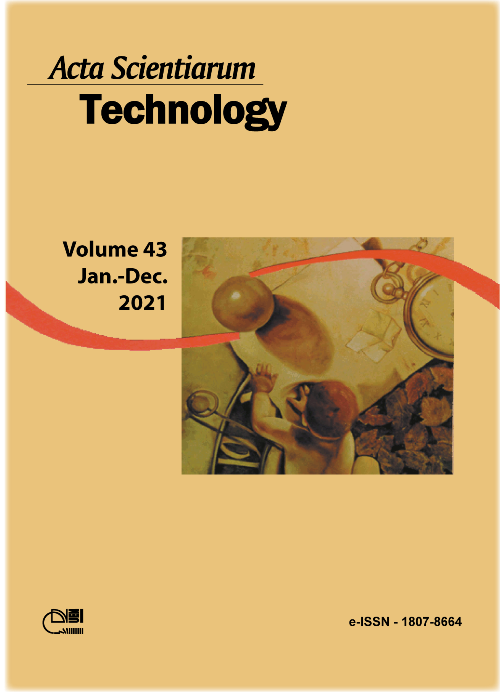Biomass cogeneration plants integrated into poultry slaughterhouses for reducing industry costs with energy
DOI:
https://doi.org/10.4025/actascitechnol.v43i1.50967Keywords:
biomass cogeneration plants; poultry slaughterhouses; renewable energy; wood chips.Abstract
A technical and economic feasibility analysis was performed concerning biomass cogeneration to supply the thermal and electricity demands of poultry slaughterhouses. The analysis considers measured data referring to the annual energy consumption from an existing industry as well as the characteristics of equipment available in the Brazilian market. The cogeneration plant is equipped with a water tube steam generator and a condensing-extraction steam turbine in a Rankine cycle. Four different configurations were evaluated, including impulse and reaction turbines at two steam pressure/temperature levels (43 bar / 450 °C and 68 bar / 520 °C). A steady state full load operation is considered at cogeneration mode on the weekdays and at Rankine power plant mode on the weekends, when there is no process steam consumption. The technical analysis pointed out the reaction turbine at 68 bar / 520 ºC as the best alternative, leading to the highest overall efficiency. In addition, this plant configuration showed economic advantages represented by an Internal Rate of Return (IRR) of 21%, a Net Present Value (NPV) of US$ 10.93 million, and a payback time of 6 years, enabling a reduction on the industrial cost with energy in the slaughterhouse to 19 US$/ton of product (-30% in comparison to the base case). Finally, the calculated LCOE of 73 US$/MWh was lower than the current price of the electricity in the market, indicating potential economic feasibility of the proposed concept.
Downloads
Downloads
Published
How to Cite
Issue
Section
License
DECLARATION OF ORIGINALITY AND COPYRIGHTS
I Declare that current article is original and has not been submitted for publication, in part or in whole, to any other national or international journal.
The copyrights belong exclusively to the authors. Published content is licensed under Creative Commons Attribution 4.0 (CC BY 4.0) guidelines, which allows sharing (copy and distribution of the material in any medium or format) and adaptation (remix, transform, and build upon the material) for any purpose, even commercially, under the terms of attribution.
Read this link for further information on how to use CC BY 4.0 properly.



















8.png)




